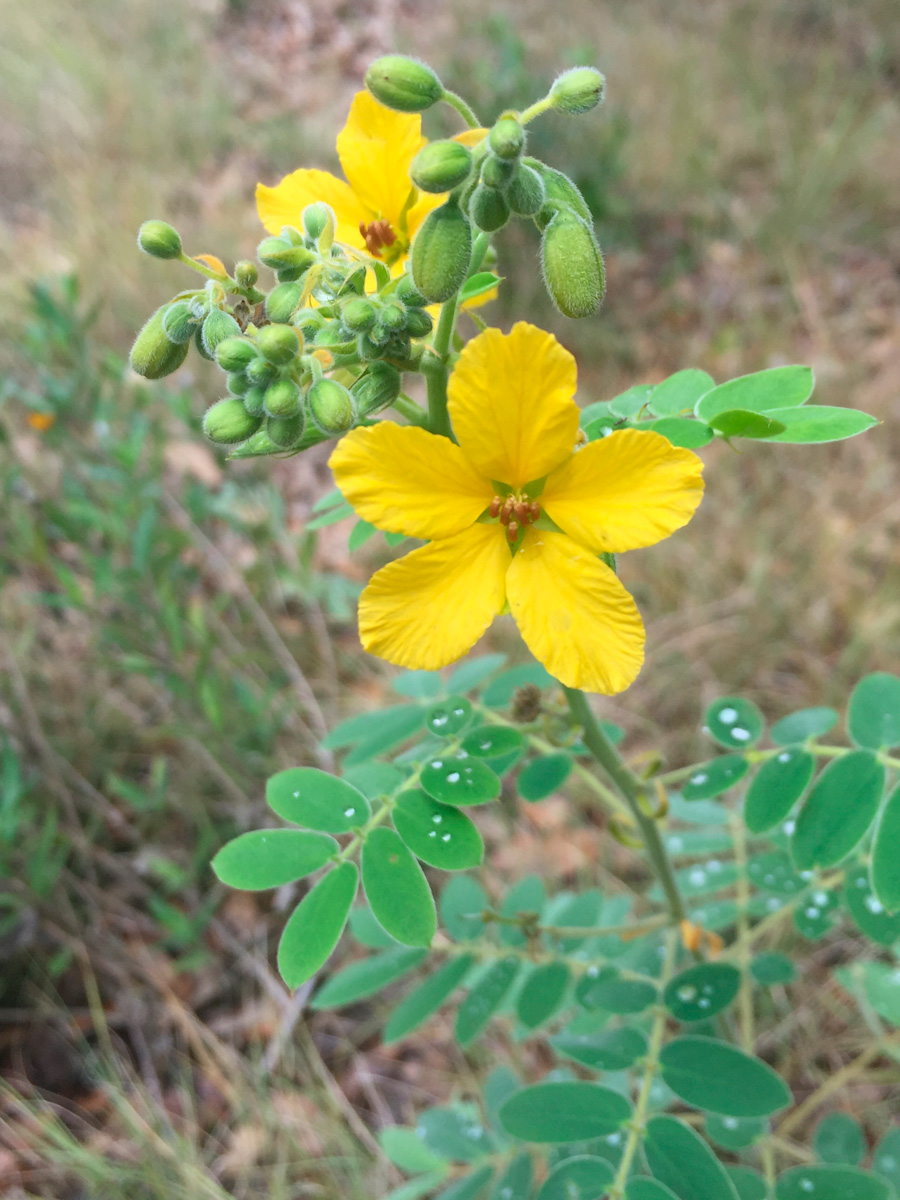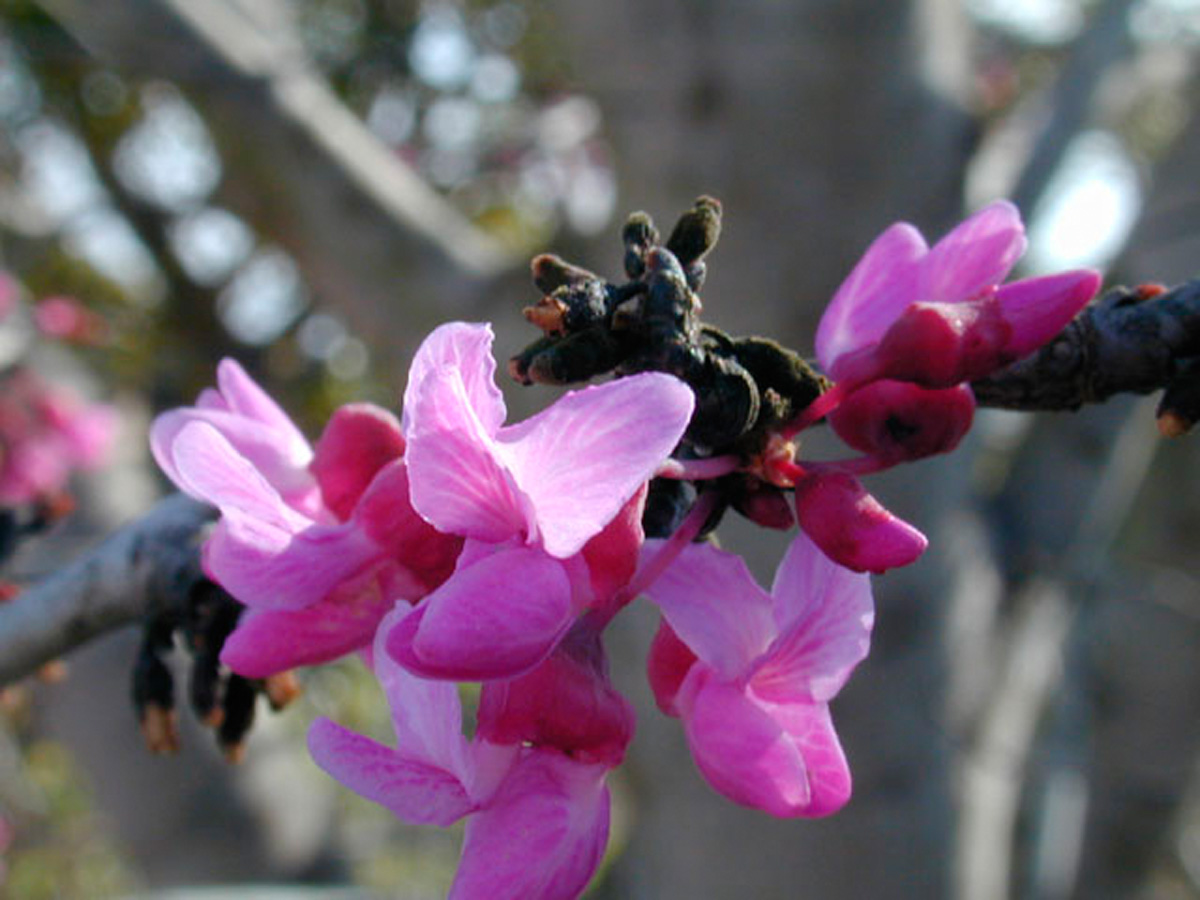
Whether you have a front-yard garden the size of a postage stamp or a 100-acre hayfield, the use of nitrogen-fixing plants in your landscape can boost your soil fertility. Nitrogen-fixing plants, most of which are members of the legume family, are able to “fix” nitrogen from the atmosphere through a symbiotic relationship with specialized bacteria on their roots. Some nitrogen-fixing plants are used as cover crops and are incorporated back into the soil through chopping, mowing, or tilling, which provides a large boost of nitrogen at once. But even nitrogen-fixing plants that aren’t chopped and dropped regularly, such as trees, still return nitrogen to the soil. Trees return nitrogen more gradually as their feeder roots (with the associated nitrogen-fixing nodules) die off and are replaced as part of their natural life cycle.
Cover Crops
Cover crops are long familiar to farmers and ranchers, but even home gardeners (both ornamental and vegetable) can benefit from them. If your vegetable garden isn’t producing the way it used to, or you simply want a good way to keep down weeds during the winter or summer fallow season, try planting a cover crop and then turning it into the soil. Excellent cover crops for the Southern Plains region include clovers, vetches, and peas.

Clovers are versatile, reliable, and make excellent fall or spring cover crops. My favorites are crimson clover (Trifolium incarnatum) and ‘Silver River’ sweet clover (Melilotus albus). For sheer color, crimson clover is incredible. The deep red flower heads, which are 2–to-3-inch-long brushes, give a lush, velvety appearance when a whole field or garden bed is in bloom. ‘Silver River’ is a recently introduced variety of white sweet clover from Texas A&M University that is beloved by bees. While not as showy as the crimson clover, it is very drought- and rust-resistant and can produce a prodigious amount of nitrogen-rich plant matter.

Of the vetches, the hardiest and most stalwart may be hairy vetch (Vicia villosa). It is the most winter hardy and forgiving of different soil types and makes an excellent cool-season cover.

My favorite cover crops of all are the Southern peas (Vigna unguiculata) because, quite frankly, I like to eat them. Southern peas such as purple hulls, black-eyes, and cream peas are warm-season crops that must be planted after the soil has warmed up to about 60°F. They aren’t too fussy about soil type, and they are easy to harvest, fun to shell, and delicious to eat. Even if you don’t decide to eat them, you can turn the plants under at the end of the season and feel good about all of the nitrogen you are returning to the soil.

Herbaceous Ornamentals
If you like the idea of returning nitrogen to your soil but aren’t interested in the blanket look of a cover crop, there are a number of herbaceous ornamentals that fit the bill. As a native Texan, I cannot discuss nitrogen-fixing plants without mentioning Texas bluebonnet (Lupinus texensis, annual). Named as our state flower and sown along highways all throughout the state, it creates an impressive blue show every spring. Many people don’t realize that it is also a legume.

Two lovely fall-blooming nitrogen fixers are partridge pea (Chamaecrista fasciculata var. fasciculata, Zones 3–9) and Lindheimer’s senna (Senna lindheimeriana, Zones 8–11). The senna blooms from August to October, has fuzzy pinnate leaves and yellow flowers, and thrives in dry, rocky soils. Partridge pea blooms longer, from about May to October and prefers sandy or alluvial soils.

Trees
The following are my favorite nitrogen-fixing trees for the garden because of their natural beauty and lack of thorns: Anacacho orchid tree (Bauhinia lunarioides, Zones 8–11) is a beautiful, shade-tolerant shrub/small tree with lovely white flowers and leaves that look like folded hearts. Texas mountain laurel (Sophora secundiflora, Zones 7–10) is a harbinger of spring with glossy dark green leaves and heavy clusters of sweet-smelling purple blossoms. Golden lead ball tree (Leucaena retusa, Zones 7–9) looks like it came from Dr. Seuss’s imagination, with bright golden, fuzzy, ball-shaped flowers and airy, light green foliage. Texas redbud (Cercis canadensis var. texensis, Zones 4–8) is a beautiful, small understory tree with heart-shaped leaves, purplish red buds, and distinctive brown seedpods that reveal its leguminous nature. Eastern redbud (Cercis canadensis var. canadensis, Zones 4–8) looks like the Texas variety but is much larger, requires more water, and has a more extended geographic range.

Whether you are looking to rejuvenate depleted soils or prevent their depletion in the first place, there are a number of nitrogen-fixing species that fit the bill. Luckily for us, these species are beautiful as well as useful! Experiment with a few in your own garden if you haven’t tried them before.
—Karen Beaty is a horticulturalist at the Lady Bird Johnson Wildflower Center in Austin, Texas.
Fine Gardening Recommended Products

Wagner's 52003 Classic Blend Wild Bird Food, 6-Pound Bag
Fine Gardening receives a commission for items purchased through links on this site, including Amazon Associates and other affiliate advertising programs.

The Crevice Garden: How to make the perfect home for plants from rocky places
Fine Gardening receives a commission for items purchased through links on this site, including Amazon Associates and other affiliate advertising programs.



















Comments
Log in or create an account to post a comment.
Sign up Log in